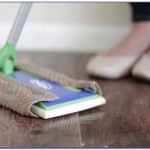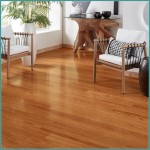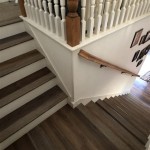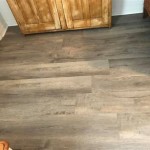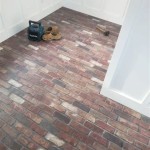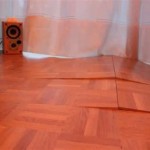What To Look For In Laminate Flooring
Laminate flooring has become a popular choice for homeowners and businesses alike due to its durability, affordability, and aesthetic versatility. It effectively mimics the look of hardwood, tile, or stone at a fraction of the cost, while also offering resistance to scratches, stains, and fading. However, not all laminate flooring is created equal. Choosing the right laminate flooring requires careful consideration of several key factors to ensure long-lasting performance and satisfaction. This article provides a comprehensive guide to understanding these crucial aspects.
AC Rating: Understanding Abrasion Class
The Abrasion Class (AC) rating is a critical indicator of a laminate floor's durability and suitability for different levels of foot traffic. This rating measures a laminate's resistance to abrasion, impact, and staining. A higher AC rating signifies greater durability and the ability to withstand heavier use. Generally, AC ratings range from AC1 to AC5.
An AC1 rating is typically suitable only for light residential use, such as bedrooms or closets, where foot traffic is minimal. AC2 rated laminate is appropriate for general residential use, including living rooms and dining rooms. AC3 rated laminate is designed for heavy residential use and light commercial applications, making it a good choice for high-traffic areas in homes or small offices. AC4 rated laminate is suitable for general commercial use, such as offices, retail spaces, or restaurants. The highest rating, AC5, is designed for heavy commercial use, including high-traffic retail environments and public spaces.
Selecting the correct AC rating for the intended application is essential to ensure the laminate flooring maintains its appearance and integrity over time. Choosing a lower AC rating than necessary can lead to premature wear and tear, while opting for a higher rating than required may result in unnecessary expense. Factors such as the number of occupants, the presence of pets, and the type of activities taking place in the room should all be considered when determining the appropriate AC rating.
Thickness: Assessing Stability and Sound Insulation
The thickness of laminate flooring directly impacts its stability, durability, and sound insulation properties. Laminate flooring thickness is typically measured in millimeters (mm), with common thicknesses ranging from 6mm to 12mm. Thicker laminate planks generally offer greater stability and are less prone to flexing or bending under pressure.
A thicker laminate floor can also provide better sound insulation, reducing noise transmission between floors. This is particularly beneficial in multi-story homes or apartments. The increased density of thicker planks helps to absorb impact sounds, creating a quieter and more comfortable living environment.
While thicker laminate flooring tends to be more expensive, the benefits it provides in terms of stability, durability, and sound insulation often justify the additional cost. In high-traffic areas or rooms where noise reduction is a priority, opting for a thicker laminate floor is highly recommended. However, it is important to consider the existing floor height and any potential issues with door clearances when selecting the appropriate thickness.
Core Composition: Evaluating Moisture Resistance and Stability
The core of laminate flooring is the foundation of its structure and plays a crucial role in its overall performance, particularly in terms of moisture resistance and dimensional stability. The core is typically composed of High-Density Fiberboard (HDF) or Medium-Density Fiberboard (MDF). HDF is denser and more resistant to moisture than MDF, making it the preferred choice for areas prone to humidity or spills, such as kitchens and bathrooms.
The density of the core directly affects its ability to resist swelling and warping when exposed to moisture. Laminate flooring with a high-density core is less likely to be damaged by spills or humidity, extending its lifespan and maintaining its appearance. Some laminate flooring products also feature a moisture-resistant coating or treatment on the core to further enhance their protection against water damage.
When selecting laminate flooring, it is essential to inquire about the core composition and its moisture resistance properties. Reviewing the manufacturer's specifications and warranty information can provide valuable insights into the product's ability to withstand moisture exposure. In areas with high humidity or potential for spills, choosing laminate flooring with an HDF core and a moisture-resistant coating is highly advisable.
Surface Texture and Embossing: Enhancing Authenticity and Slip Resistance
The surface texture and embossing of laminate flooring contribute significantly to its aesthetic appeal and functionality. Embossing refers to the process of creating a textured surface on the laminate to mimic the natural grain patterns of wood, stone, or tile. This texture enhances the realism of the flooring and provides a more tactile experience.
Registered embossing, a more advanced technique, aligns the embossed texture precisely with the printed design layer, creating a highly realistic and authentic look. This type of embossing is particularly effective in replicating the intricate details of natural materials, such as wood knots and grain variations. Different levels of embossing can create a variety of textures, from smooth and subtle to deeply textured and rustic.
In addition to its aesthetic benefits, surface texture also plays a role in slip resistance. A textured surface provides better traction, reducing the risk of slips and falls, especially in areas prone to moisture or spills. When selecting laminate flooring, consider the level of texture and its impact on both the appearance and safety of the flooring.
Edge Style: Determining Aesthetics and Installation Method
The edge style of laminate flooring planks affects its overall appearance and the ease of installation. There are several common edge styles, including square edge, beveled edge, and micro-beveled edge. Each edge style creates a distinct visual effect and influences the way the planks fit together.
Square edge laminate flooring has straight, unadorned edges that create a seamless, uniform surface when installed. This style is often preferred for a modern, minimalist look. Beveled edge laminate flooring features slightly angled edges that create subtle grooves between the planks, mimicking the look of traditional hardwood flooring. These beveled edges can add depth and character to the floor.
Micro-beveled edge laminate flooring is similar to beveled edge, but the bevels are smaller and more subtle. This style provides a slightly textured look without creating pronounced grooves. The choice of edge style depends on the desired aesthetic and the overall design of the room. It is also important to consider the impact of the edge style on the visibility of seams and the potential for dirt accumulation. Some edge styles may be easier to clean and maintain than others.
Locking System: Ensuring Secure and Easy Installation
The locking system is a critical component of laminate flooring, as it determines how easily and securely the planks connect together. A well-designed locking system ensures a tight, seamless fit, preventing gaps and minimizing the risk of moisture penetration. There are various types of locking systems available, each with its own advantages and disadvantages.
Click-lock systems are the most common type of locking system used in laminate flooring. These systems utilize interlocking tongues and grooves that snap together easily without the need for glue or nails. Angle-tap locking systems require the plank to be angled and tapped into place, while drop-lock systems involve dropping the plank into position and locking it in place with a downward motion. The ease of installation varies depending on the specific locking system.
A robust and easy-to-use locking system is essential for ensuring a successful and long-lasting installation. When selecting laminate flooring, it is important to consider the type of locking system and its ease of use. Reading reviews and watching installation videos can provide valuable insights into the performance of different locking systems. Also, ensuring the subfloor is level and properly prepared is extremely important regardless of the locking mechanism.
Warranty Protection: Understanding Coverage and Conditions
A comprehensive warranty provides assurance of the quality and durability of laminate flooring. Laminate flooring warranties typically cover defects in materials and workmanship, as well as resistance to wear, fading, and staining. The length of the warranty can vary significantly, ranging from a few years to lifetime warranties. The warranty coverage and conditions should be carefully reviewed before making a purchase.
Some warranties may only cover specific types of damage or defects, while others may have limitations or exclusions. For example, some warranties may not cover damage caused by improper installation, excessive moisture, or abuse. It is important to understand the terms and conditions of the warranty to ensure that the laminate flooring is adequately protected.
A longer warranty period generally indicates greater confidence in the product's durability and longevity. However, it is essential to consider the specific coverage and limitations outlined in the warranty document. Comparing warranties from different manufacturers can help in making an informed decision and selecting laminate flooring that offers adequate protection against potential defects and damage.
Environmental Considerations: Choosing Sustainable Options
Environmental consciousness is becoming increasingly important in the selection of building materials, including laminate flooring. Many manufacturers are now offering sustainable laminate flooring options that are made from recycled materials and manufactured using environmentally friendly processes. These products contribute to reducing waste and minimizing the environmental impact of flooring production.
Laminate flooring can be certified by various organizations, such as the Forest Stewardship Council (FSC) and the FloorScore program, to verify its environmental performance. FSC certification ensures that the wood used in the laminate flooring comes from responsibly managed forests. FloorScore certification indicates that the laminate flooring meets stringent indoor air quality standards and emits low levels of volatile organic compounds (VOCs).
When selecting laminate flooring, look for products that are certified by reputable environmental organizations. Choosing sustainable laminate flooring options can help reduce the environmental footprint of a home or business and contribute to creating a healthier indoor environment. Additionally, exploring the recycling options available for laminate flooring when it reaches the end of its life cycle can further minimize its environmental impact.

What To Know When Laminate Flooring Addicted 2 Diy

When Laminate Floor Looks As Good Real Wood Lucy Loves To Eat

2025 Laminate Flooring Trends 10 Stylish Ideas

Types Of Laminate Flooring The Home Depot

Laminate Floors Get The Look Of Wood And More For Less

Laminate Vs Vinyl Flooring A Comparative Guide

Types Of Laminate Flooring The Home Depot

What To Know Before Choosing Laminate Flooring Inspire Diy Kent Thomas

What Is Laminate Flooring Made Of America

Everything You Need To Know About Laminate Flooring Proximity Mills
Related Posts

